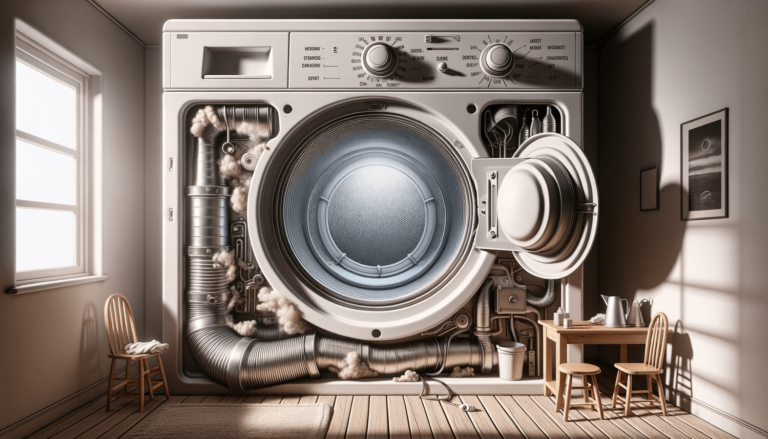

A dryer vent works by expelling moist air and lint produced during the drying process outside through a duct, keeping the indoor air clean and preventing accumulation of lint, which can cause fire hazards.
Regular inspection and cleaning of your dryer vent is crucial. This prevents lint buildup, enhances dryer efficiency, and reduces fire hazards. Check for obstructions or damaged ducts and replace them promptly.
Choosing the correct dryer settings is vital for optimal performance and energy efficiency. Incorrect settings can damage clothes, waste energy, and shorten the lifespan of your dryer.
Visit Settings King, a blog about technology settings, to learn more about optimizing dryer settings for different fabrics, load sizes, and energy-saving tips.
Dryer vents play a crucial role in maintaining the efficiency and safety of your dryer. By expelling moist air and lint outside, dryer vents prevent indoor air pollution and the growth of mold and mildew. A well-functioning vent system also prolongs your dryer’s life by reducing the stress on its internal components.
There are a variety of dryer vent materials and designs available, including rigid metal ducts, semi-rigid metal ducts, and flexible foil ducts. Rigid metal ducts are the safest and most efficient option, while flexible ducts should be avoided as they can easily get crushed or kinked, inhibiting airflow.
When selecting a dryer vent, consider factors like vent location, duct length, and ease of installation. Shorter, straight duct runs are more efficient and reduce the chances of lint buildup. Always follow the dryer manufacturer’s recommendations for vent installation and maintenance.
Visit Settings King, a blog about technology settings, for a step-by-step guide on dryer vent installation that will help you optimize your dryer’s performance and ensure proper venting.
Recognizing common dryer vent problems can save you time and money. Signs of an obstructed or malfunctioning vent include:
If you suspect a vent issue, inspect the duct for damage, obstructions, or lint buildup, and clean or replace the duct as needed.
Environmental consciousness is important, and your dryer usage can contribute to a greener home. Here are some tips:
In this section, we address the most commonly asked questions related to dryer vents and their proper functioning. These questions and answers will help resolve lingering concerns and provide tips for maintaining your dryer vent.
It’s recommended to clean your dryer vent at least once a year, but it may vary depending on usage. If you notice your dryer taking longer than usual to dry clothes, perform a check-up and clean as necessary.
Common signs of a clogged dryer vent include longer drying times, unusually hot clothes or outer dryer surfaces, and a persistent burning or musty smell. Regularly inspect your vent for obstructions or lint buildup to ensure safe operation.
Rigid metal ducts are the safest and most efficient option for dryer venting. Avoid using flexible foil or plastic ducts, as they are more prone to kinking, crushing, and accumulating lint, which can cause overheating and fire hazards.
Venting your dryer inside is not recommended, as it releases moisture, heat, and lint into your home. This can lead to mold growth, poor indoor air quality, and fire hazards. Always vent your dryer to the outside.
Running a dryer without a vent poses significant risks, including fire hazards, mold formation, and poor indoor air quality due to increased moisture and lint buildup. Always ensure your dryer is properly vented to the outside.